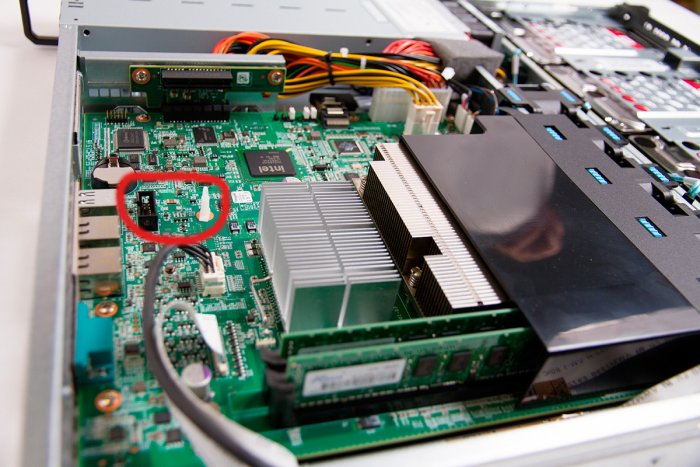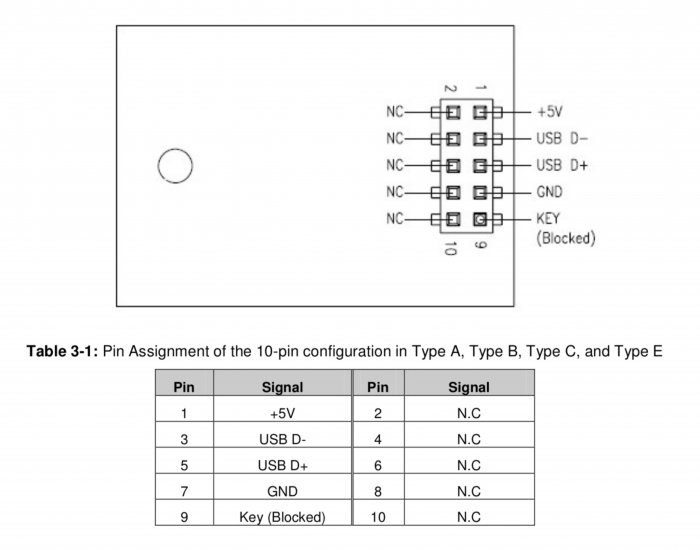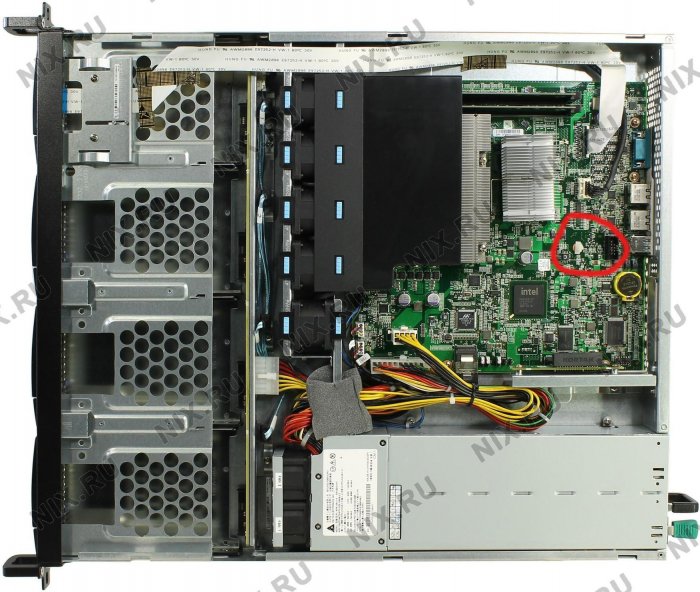
jollmo
Member-
Posts
40 -
Joined
-
Last visited
Everything posted by jollmo
-
I would really love to help. but reading this, I'm coming wet from sweat from my cellar, where I just put my rig all together, as the machine now works perfectly... For now I'm not going back, ripping all apart again, as my back hurts like mad (fng heavy all this stuff, the server, the UPS...) But if I have to do it again, I promise to save and send logs! Thank you a lot for your help!
-
Ok, I removed the NIC, booted without it, shut down, inserted it again, rebooted and the card works Don't know why, didn't change anything, but actually, I'm a happy camper. One annoying thing, upon every restart, one of my disks reports an partition error and I have to repair it... Thereafter everything is fine. SMART shows no errors.
-
In TCRP? Because in ARPL that didn't work... I could try to remove the card, build the loader again, boot into the system and shut down again, reinstall the NIC and maybe it'll work...
-
Turned out, it was the stick... The verbatim was crap, went and bought a new sandisk, now it boots on the first attempt. Ok, machine is up and running, same behaviour, no 10G nic, no resource monitor...
-
balenaEtcher, working good on a mac... Never gave me problems... Worked well on the first try, bootet into the shell and let me configure everything. Boot ended up in a blinking cursor. Second try, I formatted it to FAT and flashed the image again. Now the Stick won't be recognised at all from the server's BIOS. Tried 5 times already... Weird, my old Kingston USB stick, I used for arpl works, but only in UEFI mode... In the BIOS, I enabled legacy as well... Somehow, it seems to be the stick, it works with all devices, but not on the server... Need to buy another one... Weird, that it worked once...
-
did that a few times, now it even doesn't boot to the stick with a newly flashed image...
-
hmm, after building the loader and rebooting, I'm getting a blinking cusor, seems he can't find the stick he built the loader on... Maybe I've overseen something...
-
Thank you, I will try and report back!
-
Thank you! Yes, I took DS3622xs+, it worked very well under 7.1, but started to behave less perfect with 7.2 (all resource monitoring data missing) and now no detection of the nic... Everything else is fine... Changing to TCRP, will I loose any data? And my machine has 8 ports via a hba card in ID mode and 2 additional SATA ports, with 1 SSD from which it's booting from, so I would have to choose 10 bays, correct?
-
I might be a bit stupid and maybe unable to just read, but can anybody help me with installing an additional nic in my build? I pulled an Intel X540-T2 from my working machine, running under jun's loader with 6.3 and installed it in my new build, a Fujitsu TXM2540 M1, which runs 7.2 (latest) under arpl-i18n 23.9.4 I rebuilt the loader, but the card is not recognised. Any additional step I'm missing here? Thank you for any help!
-
I just changed from ARPL to ARPL-18n and updatet from latest 7.1 to 7.2 in 7.2, everything works good so far (haven't tested every bit) but I found resource monitor not working: Every field is empty, nothing is monitored. (in the Info Center under System, CPU info, cores, freq, memory and even thermal status are reported correctly) Anything I could have missed while building the loader? Bildschirmfoto 2023-07-08 um 13.09.06.pdf Bildschirmfoto 2023-07-08 um 13.09.20.pdf My install is baremetal on a TX5240 M1 3622xs+
-
Your RAID-card has to be in IT-mode! See, if you can x-flash it... Use google!
-
I did a lot of research, I know about the SAS2108 and its capability to be x-flashed, but nobody ever had success with that special Fujitsu card, the D2616-A22... I just added a LSI SAS 9220-8i, brought into IT-mode, which is working perfectly and makes my TX2540 the perfect machine It will replace my Lenovo px12-450, which is a proper 12 bay server, but has only 1 2.5GHz E3-1265Lv2 vs 2 2.4GHz E5-2470 v2 and 1x 16GB memory vs 2x 96GB... In the end, the TX2540 is a very good server when it comes to ARPL, everything works oob, it has, like the px12-450, an internal slot for USB-NANDs what makes it very comfortable to run different OSes on it. You have 6 PCIe slots for RAID cards or NICs and plenty of computing power for every kind of VMs you want to run. Used ones are cheap to get and there are plenty...
-
Learned it has to be a hba card in IT mode to be able to passthrough the disks to the OS. The d2616 is not flashable, as the D2607 or D3307 would be. So now looking for a compatible card in IT mode... Stay tuned
-
Hi, I just got a Fujitsu Primergy TX2540M1 and tried to install DSM on it. I used a DS3622xs baremetal approach. I was able to boot and install DSM to a SSD attached to one of the internal SATA ports. Logging in, there are no other disks seen in the storage manager, only the SSD at the internal port. I have 4 disks attached to a LSI megaraid controller, but they don't show up at all. doing lspci -q, I could see the following output (only SATA related): 0000:00:1f.2 SATA controller: Intel Corporation C600/X79 series chipset 6-Port SATA AHCI Controller (rev 05) 0000:02:00.0 RAID bus controller: Broadcom / LSI MegaRAID SAS 2108 [Liberator] (rev 05) 0001:09:00.0 SATA controller: Marvell Technology Group Ltd. 88SE9235 PCIe 2.0 x2 4-port SATA 6 Gb/s Controller (rev 11) 0001:0c:00.0 SATA controller: Marvell Technology Group Ltd. 88SE9235 PCIe 2.0 x2 4-port SATA 6 Gb/s Controller (rev 11) The Marvell is disabled in the BIOS... So the controller seems to be seen... lspci -k gives me: 0000:02:00.0 Class 0104: Device 1000:0079 (rev 05) Subsystem: Device 1734:1176 Kernel driver in use: megaraid_sas But nothing shows up... Any ideas what I'm missing?
-
Because of the Rj45 / SFP+ mismatch, in-between I tried a Asus XG-100F, which I couldn't make recognised under OSX at all. My second try was a Sonnet Solo 10G SFP+, which worked oob, but was very unreliable in connection and had read rates of max 30 MB/s. That was with a 10m Rapidcon Twinax SFP+ cable...
- 24 replies
-
- thunderbolt
- ethernet
-
(and 2 more)
Tagged with:
-
That was with 6m Cat5e cable, with 15m Cat6A I get 950 write / 995 read...
- 24 replies
-
- 1
-

-
- thunderbolt
- ethernet
-
(and 2 more)
Tagged with:
-
Hi, I added an Asus XG-C100C to my Hackintosh, which worked OOB and a IBM Emulex 49Y7952 2x10GbE card to my converted px12-450 running DSM 6.2.3-25426 Update 3. As the Emulex is FTP+ and the Asus is RJ45 I've put a 6COMGIGA 10GBase-T SFP+ RJ45 copper transceiver Module in the Emulex, turned on jumbo frames and now I've got transfer rates from around 915 MB/s write and 990 MB/s read.
- 24 replies
-
- thunderbolt
- ethernet
-
(and 2 more)
Tagged with:
-
Thats exactly the partition scheme I have on my original NAND with the Lenovo-system on it...
-
my newly prepared one showed: /dev/disk5 (external, physical): #: TYPE NAME SIZE IDENTIFIER 0: GUID_partition_scheme *16.0 GB disk5 1: EFI NO NAME 15.7 MB disk5s1 2: Linux Filesystem 31.5 MB disk5s2 3: Bios Boot Partition 4.2 MB disk5s3 when attached to my mac using the "diskutil list" command in terminal... And thats the NAND I'm booting from now. If it helps, I can try to connect the original one (which I just removed, never altered) and look after the partition table...
-
Thats strange, I've got no idea where to find the chip... Did you try already with swapped PID/VID?
-
Could you perform lsusb -ciu and post it here?
-
The USB device can as well be: Product: USB Flash Disk Vendor ID: 0x1307 (Transcend Information, Inc.) Product ID: 0x0165 (2GB/4GB/8GB Flash Drive)... Do you have an idea, where its located? In my machine, it's located here: (this is actually a picture of your board, the px4-300r) here is another foto: the red marked area is the internal USB port. The white pin is there to arrest the USB NAND in its place. The pin layout looks like this: (looking at the back of the NAND) (You can see the hole, where the white pin comes to rest)
-
@ GodZone: What are the VID/PID of your internal/onboard USB?
-
At least in my case I had to swap VID and PID to achieve a boot. If you put in your numbers in google, for example 0x1643 0x0951, which is what I find on my Mac, asking System Preferences for my stick, it shows me: Silicon Motion Inc. Taiwan. 4/8/16GB. 0x090C. 0x1000. Kingston Technology Company. 16GB. 0x0951. 0x1665. Kingston Data Traveller. 4GB. 0x0951. 0x1643. And that is exactly my stick I used for the first try booting up my px12... So 0x0951 is the VID (Vendor ID), because it stands for Kingston Technology Company Whereas 0x1643 is the PID (Product ID) But to make it work I have to enter 0x1643 where in polanskimans tutorial the VID should be and vice versa... If its not only in my case, the ( otherwise perfect and outstanding helpful ) tutorial maybe should be corrected? In the meantime, I try to add 10G to my setup for speeding up the connection (I often have to work on big picture-material which sometimes is up to 3 GB of data) and the buildup of the softwares catalogue file... I there's interest, I might add an tutorial how I (with your help!) converted the nearly useless Lenovo Server to an outstanding performing Synology beast... Just to give back a little...


